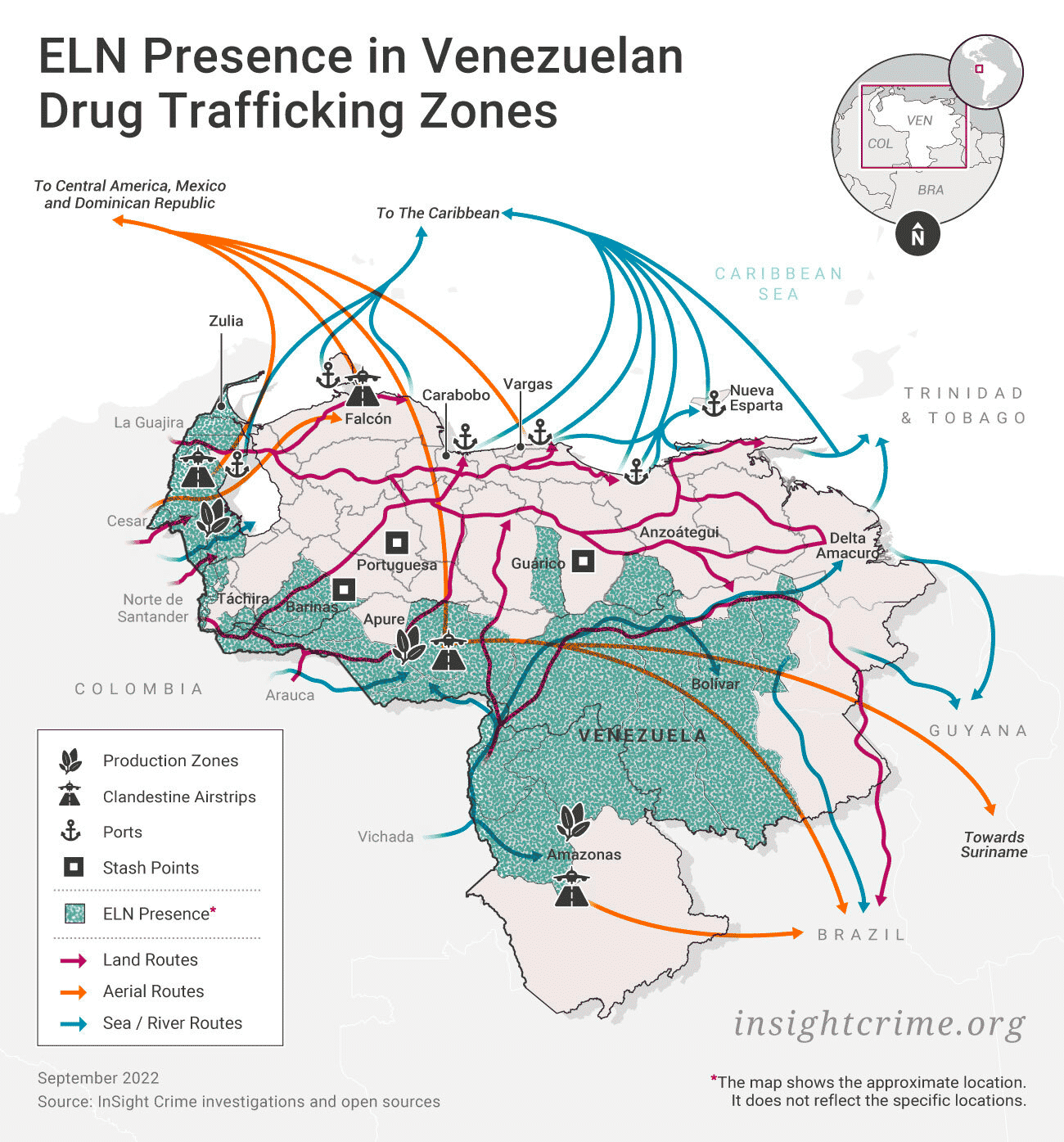Venezuela Drug Traffic Zones Map


Marcus Rodriguez
Historical Geography Expert
Marcus Rodriguez specializes in historical cartography and geographic data analysis. With a background in both history and geography, he brings unique...
Geographic Analysis
What This Map Shows
The "Venezuela Drug Traffic Zones Map" provides a stark visual representation of the areas within Venezuela that are heavily affected by drug trafficking activities. It highlights the regions most impacted by the cultivation, production, and transit of illegal narcotics. This map is not just a collection of data points; it tells a story about the socio-economic conditions, political instability, and the ongoing struggles with drug cartels in the country.
Deep Dive into Drug Trafficking in Venezuela
Drug trafficking in Venezuela has evolved into a complex issue driven by various factors, including political corruption, economic collapse, and geographical advantages. The country’s location, nestled between Colombia and the Caribbean Sea, makes it an ideal transit point for cocaine and other narcotics headed to North America and Europe. Interestingly, Venezuela has seen a significant rise in drug production, especially cocaine, which has led to the emergence of major trafficking corridors.
The cultivation of coca leaves, the primary ingredient in cocaine production, has increased dramatically in recent years. According to the United Nations Office on Drugs and Crime (UNODC), Venezuela's coca cultivation areas have expanded, with many farmers opting for this lucrative crop over traditional agriculture due to economic pressures. In fact, coca cultivation in Venezuela has surged, with estimates suggesting that over 200,000 acres are under cultivation as of 2022. This alarming trend is often attributed to the lack of government intervention and control, allowing drug cartels to thrive.
What's fascinating is that the Venezuelan government has not only struggled to combat drug trafficking but has also been accused of complicity in the drug trade. Reports have suggested that some government officials are involved with cartels or turn a blind eye to their activities, further complicating the fight against drugs. In this environment, drug trafficking has become a significant source of income for many individuals and a crucial part of the economy in certain regions.
Moreover, the effects of drug trafficking extend beyond just the illegal market. The infiltration of drug cartels has led to increased violence, corruption, and human rights abuses. In areas heavily marked on the map, such as the state of Zulia and parts of Táchira, community safety has plummeted, impacting daily life for residents. The violence not only affects drug-related crime but also spills into broader societal issues, creating an atmosphere of fear and distrust.
Regional Analysis
When examining the Venezuelan map of drug traffic zones, we can identify distinct regions with varying levels of drug activity. For example, the western border states like Táchira and Zulia are critical zones where drug trafficking routes converge. Táchira, in particular, serves as a gateway for cocaine shipments heading north into Colombia, making it a hotspot for cartel activity.
In contrast, regions like the eastern Amazonas state, while less populated, are increasingly becoming significant areas for coca cultivation due to their remote nature. The lack of government presence in these regions has allowed drug producers to operate with relative impunity. Interestingly, the map also reveals urban areas such as Caracas, where drug trafficking has permeated local communities, further complicating law enforcement efforts.
Comparing these regions highlights the disparities in how drug trafficking affects different parts of the country. Urban areas experience violence and crime as gangs compete for control over territories, while rural areas face the challenges of coca cultivation and its economic implications. This duality illustrates how drug trafficking is not just a criminal issue but a socio-economic dilemma that impacts the fabric of Venezuelan society.
Significance and Impact
Understanding the dynamics of drug trafficking in Venezuela is crucial not only for the country but also for the wider region and international community. The implications of this issue are profound, influencing everything from public health to international relations. As drug trafficking continues to flourish, the Venezuelan government faces mounting pressure to take action, yet its capacity to do so remains in doubt due to ongoing economic and political crises.
Moreover, the situation has raised concerns about the potential spillover effects into neighboring countries, especially Colombia, which has its own long-standing issues with cocaine production. As drug routes evolve and adapt, the challenges faced by law enforcement and governments in the region will only increase. Future projections suggest that, unless significant changes are made, Venezuela may continue to be a critical player in the global drug trade, with far-reaching consequences for its citizens and beyond.
In summary, the "Venezuela Drug Traffic Zones Map" is not just a visual tool; it encapsulates a myriad of interconnected issues that reflect the current state of Venezuela. Understanding these dynamics is essential for anyone looking to grasp the complexities of drug trafficking and its impacts on society, politics, and the economy.
Visualization Details
- Published
- October 2, 2025
- Views
- 30
Comments
Loading comments...